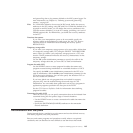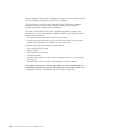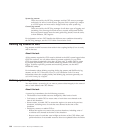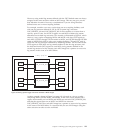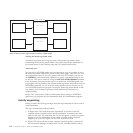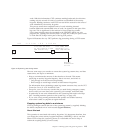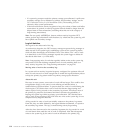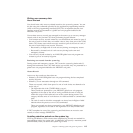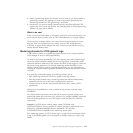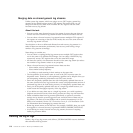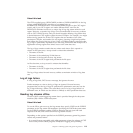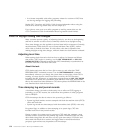
work. With this information, CICS continues reading backwards, but this time
reading only the records for units of work that are identified in the activity
keypoint. Reading continues until CICS has read all the records for the units of
work identified by the activity keypoint.
This process means that completed units of work, including shunted
backout-failed and commit-failed units of work, are ignored in this part of the
log scan. This is significant for the retrieval of user-written log records.
User-written records cannot be presented at the XRCINPT global user exit
program (see “Writing user-recovery data” on page 115) if they are part of units
of work that CICS skips in this part of the log scan process.
Figure 10 illustrates the way CICS performs log processing during a CICS restart.
Here are some steps you can take to ensure that system log stream sizes, and thus
restart times, are kept to a minimum:
v Keep to a minimum the amount of data that has to be read. This means
specifying an activity keypoint frequency that is non-zero, and which is:
– Long enough to avoid excessive keypointing
– Short enough to avoid large volumes of data between keypoints.
For information about calculating system log stream structure sizes, see the CICS
Transaction Server for z/OS Installation Guide.
v Except for your own recovery records that you need during emergency restart,
do not write your own data to the system log (for example, audit trail data).
v In particular, do not write information to the system log that needs to be kept.
(See “Avoiding retention periods on the system log” on page 115).
v If you write a long-running transaction that updates recoverable resources,
ensure that it takes a syncpoint at regular intervals.
Keeping system log data to a minimum
CICS log manager controls the size of the system log stream by regularly deleting
the oldest completed unit of work records (log-tail deletion).
About this task
This operation is associated with activity keypoints. It is important, therefore, that
you choose the correct activity keypoint frequency (AKPFREQ) - that is, one that
allows CICS to keep the system log down to a reasonable size and to keep it
within the coupling facility (if one is used):
CICS SYSTEM LOG STREAM
CICS uses AKP data CICS reads back
to skip-read in-flight sequentially to
UOW records only. last complete AKP
AKP AKP
n-1 n
Abnormal
termination
of CICS
Figure 10. System log scan during restart
Chapter 11. Defining system and general log streams 113



